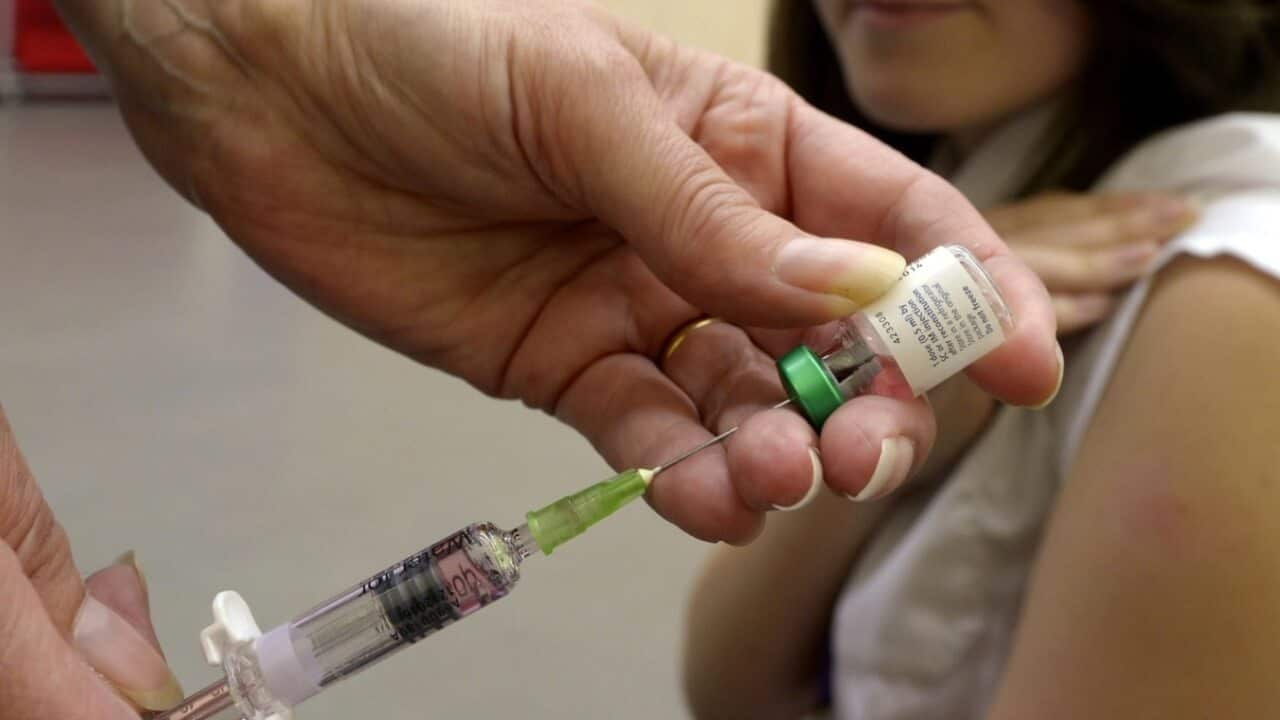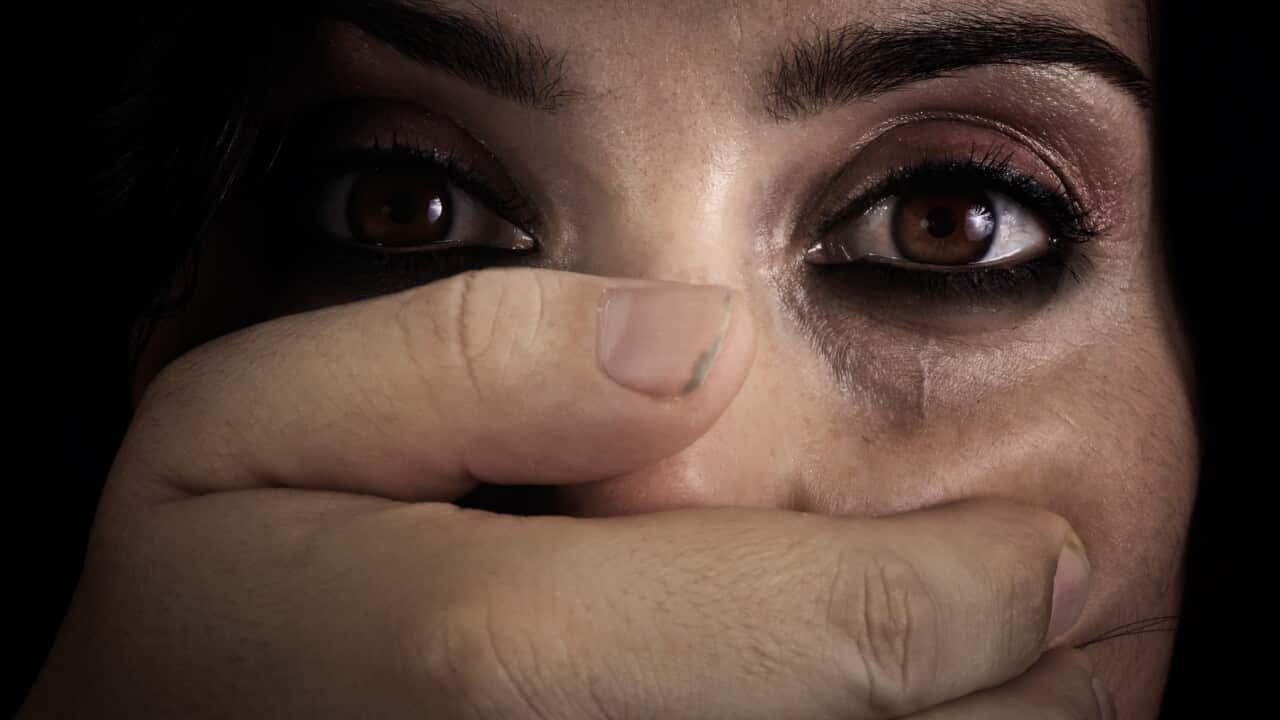English
Measles is a highly infectious airborne disease that spreads when an infected person breathes, coughs or sneezes.
Nine in 10 unvaccinated people exposed to the virus can contract the illness.
Infectious diseases specialist Dr Sanjaya Senanayake is an Associate Professor of Medicine at the Australian National University.
"If someone goes into a hospital waiting room, with measles and waits there for about 15 minutes and then leaves, for the next two hours, anyone going into that room will be exposed to measles. So it's really, really infectious."
Symptoms - which occur between 10 and 18 days after exposure - include a rash a runny nose, cough, sore eyes and a fever.
Most people recover, but measles can lead to health complications - including ear infections, pneumonia, and encephalitis, which is the enflamation of the brain.
In some cases, it can result in death.
Dr Senanayake says measles is rare in Australia - thanks to vaccinations - but a global surge in cases has health authorities on alert.
"We've done really well with immunisations in Australia with regard to lots of infections, particularly measles. In fact, in 2014 the World Health Organization regarded measles as eliminated within Australia. However, this does not mean we don't see measles in Australia because measles is still active in other parts of the world. So people coming into Australia - either Australians returning from overseas or tourists visiting Australia - can bring measles back here. And we can see small outbreaks occurring - as we have been seeing in different parts of the country this year."
Twenty-eight cases of measles have been detected in Australia so far this year. That's more than total number of cases reported for the entirety of 2023 - 26 cases.
Around 50 countries are experiencing what the World Health Organization describes as "large and disruptive" measles outbreaks.
This is mainly due to a decline in vaccination coverage during the pandemic, when an estimated 60 million children missed their measles immunisations.
Catch-up efforts are now critical, with cases soaring in Europe, which experienced a 30-fold rise in measles cases in 2023.
More cases have also been recorded in the US, India and Indonesia.
The World Health Organisation is also warning of a measles resurgence in the Western Pacific, where 3.6 million children missed their routine immunisations between 2020 and 2022.
Last year, cases went up 255 per cent in the region, which includes Australia, Pacific Island Nations, China, the Philippines and Malaysia.
The WHO says factors that could drive further increases include: the drop in vaccination coverage that happened during the COVID pandemic; and the size and extent of the outbreaks in the Philippines and Malaysia.
Dr Saia Ma’u Piukala is the WHO’s regional director for the Western Pacific.
"There are two countries in the Western Pacific region that reported the highest rates of measles in 2023. They were Malaysia and the Philippines. And you have the risk of importation of measles to other neighbouring countries."
Dr Senanayake says a large measles outbreak in Australia is unlikely, but he's stressing the need for people to check if they’re protected - particularly if you're heading overseas.
"It's really important that we don't get complacent about our own vaccination rates. If you're planning a trip and you've got time to look into these things, you can always meet your doctor and double check your measles vaccination status. And that can be done just by looking at immunisation records or even doing a blood test to look at antibody levels."
Measles immunisations are recommended for babies at 12 months.
Infants as young as six months of age can receive the measles-mumps-rubella vaccine prior to travel overseas to countries where measles outbreaks are occurring.
Two doses are about 97 per cent effective and protection is lifelong.
Italian
Il morbillo è una malattia altamente infettiva trasmessa per via aerea che si diffonde quando una persona infetta respira, tossisce o starnutisce.
Nove persone su 10 non vaccinate esposte al virus possono contrarre la malattia.
Il dottor Sanjaya Senanayake, specialista in malattie infettive, è professore associato di medicina presso l'Australian National University.
"If someone goes into a hospital waiting room, with measles and waits there for about 15 minutes and then leaves, for the next two hours, anyone going into that room will be exposed to measles. So really, really infectious."
I sintomi, che si manifestano tra i 10 e i 18 giorni dopo l'esposizione, comprendono eruzione cutanea, naso che cola, tosse, occhi irritati e febbre.
La maggior parte delle persone guarisce, ma il morbillo può portare a complicazioni di salute, tra cui infezioni alle orecchie, polmonite ed encefalite, ovvero l’infiammazione del cervello.
In alcuni casi può portare alla morte.
Il dottor Senanayake afferma che il morbillo è raro in Australia, grazie alle vaccinazioni, ma l'aumento dei casi a livello mondiale ha messo in allerta le autorità sanitarie.
"We've done really well with immunisations in Australia with regard to lots of infections, particularly measles. In fact, in 2014 the World Health Organization regarded measles as eliminated within Australia. However, this does not mean we don't see measles in Australia because measles is still active in other parts of the world. So people coming into Australia - either Australians returning from overseas or tourists visiting Australia - can bring measles back here. And we can see small outbreaks occurring - as we have been seeing in different parts of the country this year."
Quest'anno in Australia sono stati rilevati 28 casi di morbillo. Si tratta di un numero superiore al numero totale di casi segnalati per l'intero 2023 - 26 casi.
Circa 50 Paesi stanno vivendo quelle che l'Organizzazione Mondiale della Sanità descrive come epidemie di morbillo "ampie e dirompenti".
Ciò è dovuto principalmente al declino della copertura vaccinale durante la pandemia, quando si stima che circa 60 milioni di bambini non siano stati vaccinati contro il morbillo.
Gli sforzi di recupero sono ora critici, con un'impennata dei casi in Europa, che ha registrato un aumento di 30 volte dei casi di morbillo nel 2023.
Sono stati registrati più casi anche negli Stati Uniti, in India e in Indonesia.
L'Organizzazione Mondiale della Sanità mette in guardia anche da una recrudescenza del morbillo nel Pacifico occidentale, dove 3,6 milioni di bambini hanno saltato le vaccinazioni di routine tra il 2020 e il 2022.
Lo scorso anno, i casi sono aumentati del 255% nella regione, che comprende Australia, Paesi insulari del Pacifico, Cina, Filippine e Malesia.
Secondo l'OMS, i fattori che potrebbero determinare ulteriori aumenti sono: il calo della copertura vaccinale verificatosi durante la pandemia COVID e le dimensioni e l'estensione dei focolai nelle Filippine e in Malesia.
Saia Ma'u Piukala è il direttore regionale dell'OMS per il Pacifico occidentale.
"There are two countries in the Western Pacific region that reported the highest rates of measles in 2023. They were Malaysia and the Philippines. And you have the risk of importation of measles to other neighbouring countries."
Il dottor Senanayake afferma che è improbabile che si verifichi un'epidemia di morbillo in Australia, ma sottolinea la necessità di verificare se si è protetti, soprattutto se si è diretti all'estero.
"It's really important that we don't get complacent about our own vaccination rates. If you're planning a trip and you've got time to look into these things, you can always meet your doctor and double check your measles vaccination status. And that can be done just by looking at immunisation records or even doing a blood test to look at antibody levels."
Le vaccinazioni contro il morbillo sono raccomandate per i bambini a 12 mesi.
I bambini a partire dai sei mesi di età possono ricevere il vaccino contro il morbillo-parotite-rosolia prima di viaggiare all'estero in Paesi in cui sono in corso epidemie di morbillo.
Due dosi sono efficaci al 97% e la protezione dura tutta la vita.




